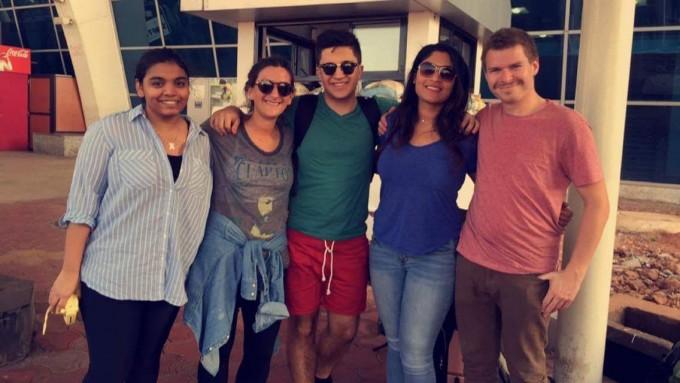By Noella Ovid
Three teams of Ryerson students took an experimental learning trip to India as top competitors in the Ryerson Global Innovation Challenge (RGIC).
Students were required to create a social venture – a product to help solve a social issue in India. Fourth-year business student Debra D’Cunha is one of the creators behind Water-G, a water purifying and transportation device that also generates electricity.
“In North America, sometimes you forget something as simple as water,” said D’Cunha. “But it’s been so impossible for them to grasp or it’s a job just to get it.”
D’Cunha said that her team focused their research on the rural areas of Rajasthan and Gujarat where getting access to clean drinking water is a chore. Through their research, they noticed that these women spent a majority of their day carrying buckets of water on their heads for miles.
“We were all concerned about access to portable water,” said Andrew Feldman, engineering student and team member behind Water-G. “Their primary method for transporting this water was usually just carrying it and we thought that this is just a bit impractical and unsafe, at least from our perspective in the more developed world.”
The team also observed that a lot of chemicals, specifically arsenic and fluoride, were present within the regions of India and aimed to rectify the health problems caused by these containments.
“I grew up in India and I’ve seen [this] first-hand,” said D’Cunha. “I left when I was 10 and I was a child myself and never knew how to sort of have an impact. And now like 20 some odd years later I’m getting the opportunity to hopefully make a difference.”
Similar to a hand steamroller, Water-G purifies water and generates electricity through the rolling motion and pushing of the device itself. The removal of micro pathogens and bacteria is incorporated through the air wells of the purification device.
The Water-G also has an attached battery pack through which any extra electricity generated can be used to generate small household items.
“If, for example, the device is not being used to purify the water, then it can also just be pushed around [which] can be done by the kids playing,” D’Cunha said.
Their group viewed this as a way to create free time for these women to have an increased opportunity for creating income.
“There’s more time spent with family [and] there’s a possibility now for an education,” said D’Cunha.
In order to increase the lifespan of the device, the Water-G comes with a kill switch. If there is no water in the device, the germicidal lamp which purifies the water does not get activated.
“The device is very intuitive as well through integration and intuitive and it really solves the basic needs that they need to live and they need to continue with their lives both economically and geologically,” Feldman said.
Since arriving back from India, D’Cunha and her team have been trying to create a business model in terms of generating revenue to put back into the business. They are in the process of applying for grants and contacting NGO’s, looking for microfinances to partner with.
“We’re trying to get contacts that are willing to work with us and create the prototypes so we can show what we have and then manufacture a few, take it down to these rural areas and test it out and see what needs to be tweaked, what’s working, what doesn’t,” D’Cunha said
The Water-G project was chosen as part of the top three teams out of 13 through a local competition in Toronto. It came in second when judged by a panel of Indian experts.
“Out of the three, this was one of the more innovative products because it tears a lot of ingenuity, it combines a lot of different ideas into one that all create a big social impact in the emerging economy we’re visiting and for rural areas,” said Osman Hamid, manager of student engagement & business development at Ryerson.










Leave a Reply